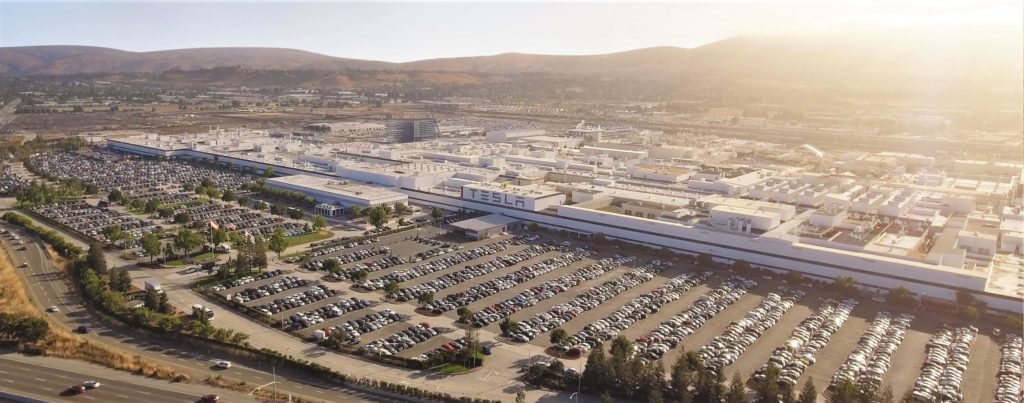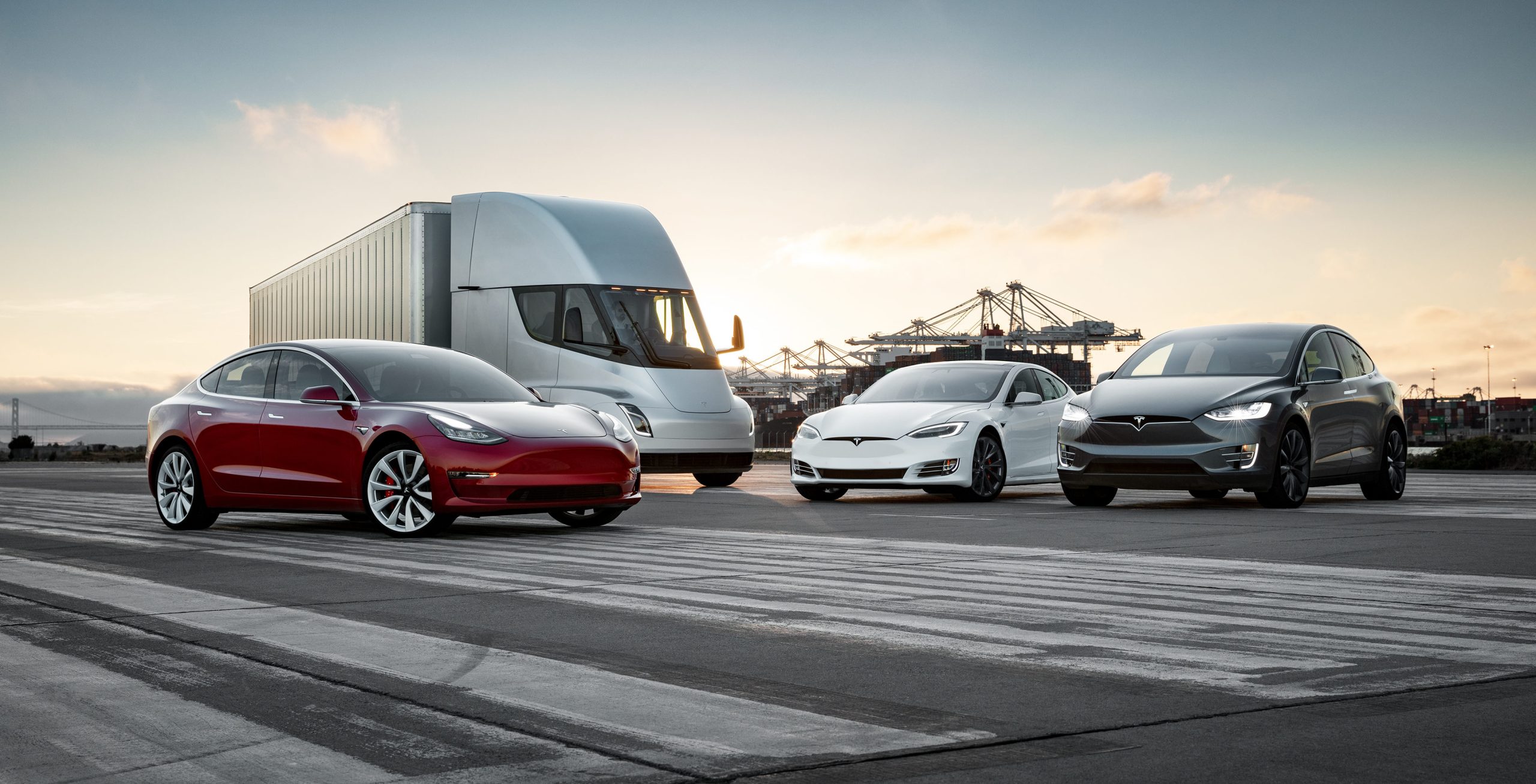One of the most memorable moments in the documentary Revenge of the Electric Car involved then-Jalopnik Editor-in-Chief Ray Wert bluntly dismissing the Tesla Model S as “vaporware.” During the sequence, it was very evident that the idea of Tesla pulling off a vehicle like the Model S seemed to be so farfetched for Wert, that refused to consider the possibility of the car being real.
That scene, in a lot of ways, is symbolic of Tesla’s journey as a whole. For every step that the company took over the years, Tesla has faced countless criticisms and doubt. Yet today, with the company producing its one-millionth electric vehicle, it is becoming more and more evident that critics and naysayers, both to Elon Musk and Tesla as a whole, are steadily losing the narrative. There are now 1 million reasons proving that Tesla is a thriving company, after all, and the number grows by the day.
Elon Musk has stated that starting an electric car company is idiocy squared, mainly due to the sheer amount of work required to thrive in the automotive industry. Couple that with the fact that Musk took over as Tesla’s CEO right in the midst of the US financial crisis, and one could see just how dire the situation was for the electric car maker during its early days. It was dire enough, for one, that its circumstances inspired an actual Tesla Death Watch series from The Truth About Cars, which eventually abandoned the initiative after it became evident that the electric car maker wasn’t going anywhere.

In a way, Tesla attracts a lot of critics because the company and its CEO dreams big without hesitation. With the Model S, Tesla wanted to prove that electric cars could be better than petrol-powered vehicles, period. With the Model 3, the company wanted to show that EVs can be mainstream. These are lofty goals, and they are very difficult to accomplish. It is then no surprise to see why there is so much opposition to the electric car maker. Some of these opposition comes in the form of short-sellers, who are financially incentivized to push TSLA stock down. A look at social media shows a glimpse of just how cruel and tasteless the company’s critics could become.
Yet despite the unwavering ad hominem attacks against Elon Musk, the physical intimidation of company employees testing Autopilot software, and the downright disturbing practice of doxxing Tesla supporters online, the electric car maker has stubbornly refused to stay down. It has fought every day since the days of the original Roadster, and it continues to do so until today, with the production ramp and impending deliveries of the Model Y. And based on the company’s perception, it will likely continue fighting every day for decades to come.
This is one of the reasons why the Tesla story is so compelling. It is difficult to not root for a company that took years to produce its first electric car and is now on track to manufacture about 500,000 vehicles in one year. Tesla, after all, dug deep to produce 20,000 vehicles in 2013, and just last year, the company closed 2019 with just over 410,000 vehicles manufactured. That’s a remarkable growth story, and it doesn’t even include the massive arm that is Tesla Energy, which is now seeing a ramp of its own.
It is not difficult to see why Tesla attracts such passionate support and anger at the same time. The company is different, its mission is ambitious, its CEO is a brazen dreamer, and it does not function like a traditional carmaker. But for Tesla supporters, the company is something that symbolizes something far more. The company represents some degree of optimism, and that is something that is pretty rare these days. Elon Musk and Tesla will likely be polarizing for years to come, but the company has 1 million reasons and counting that prove its naysayers wrong.
Here’s to the next million, and many more to come.

News
Tesla starts showing how FSD will change lives in Europe
Local officials tested the system on narrow country roads and were impressed by FSD’s smooth, human-like driving, with some calling the service a game-changer for everyday life in areas that are far from urban centers.

Tesla has launched Europe’s first public shuttle service using Full Self-Driving (Supervised) in the rural Eifelkreis Bitburg-Prüm region of Germany, demonstrating how the technology can restore independence and mobility for people who struggle with limited transport options.
Local officials tested the system on narrow country roads and were impressed by FSD’s smooth, human-like driving, with some calling the service a game-changer for everyday life in areas that are far from urban centers.
Officials see real impact on rural residents
Arzfeld Mayor Johannes Kuhl and District Administrator Andreas Kruppert personally tested the Tesla shuttle service. This allowed them to see just how well FSD navigated winding lanes and rural roads confidently. Kruppert said, “Autonomous driving sounds like science fiction to many, but we simply see here that it works totally well in rural regions too.” Kuhl, for his part, also noted that FSD “feels like a very experienced driver.”
The pilot complements the area’s “Citizen Bus” program, which provides on-demand rides for elderly residents who can no longer drive themselves. Tesla Europe shared a video of a demonstration of the service, highlighting how FSD gives people their freedom back, even in places where public transport is not as prevalent.
What the Ministry for Economic Affairs and Transport says
Rhineland-Palatinate’s Minister Daniela Schmitt supported the project, praising the collaboration that made this “first of its kind in Europe” possible. As per the ministry, the rural rollout for the service shows FSD’s potential beyond major cities, and it delivers tangible benefits like grocery runs, doctor visits, and social connections for isolated residents.
“Reliable and flexible mobility is especially vital in rural areas. With the launch of a shuttle service using self-driving vehicles (FSD supervised) by Tesla in the Eifelkreis Bitburg-Prüm, an innovative pilot project is now getting underway that complements local community bus services. It is the first project of its kind in Europe.
“The result is a real gain for rural mobility: greater accessibility, more flexibility and tangible benefits for everyday life. A strong signal for innovation, cooperation and future-oriented mobility beyond urban centers,” the ministry wrote in a LinkedIn post.
News
Tesla China quietly posts Robotaxi-related job listing
Tesla China is currently seeking a Low Voltage Electrical Engineer to work on circuit board design for the company’s autonomous vehicles.

Tesla has posted a new job listing in Shanghai explicitly tied to its Robotaxi program, fueling speculation that the company is preparing to launch its dedicated autonomous ride-hailing service in China.
As noted in the listing, Tesla China is currently seeking a Low Voltage Electrical Engineer to work on circuit board design for the company’s autonomous vehicles.
Robotaxi-specific role
The listing, which was shared on social media platform X by industry watcher @tslaming, suggested that Tesla China is looking to fill the role urgently. The job listing itself specifically mentions that the person hired for the role will be working on the Low Voltage Hardware team, which would design the circuit boards that would serve as the nervous system of the Robotaxi.
Key tasks for the role, as indicated in the job listing, include collaboration with PCB layout, firmware, mechanical, program management, and validation teams, among other responsibilities. The role is based in Shanghai.
China Robotaxi launch
China represents a massive potential market for robotaxis, with its dense urban centers and supportive policies in select cities. Tesla has limited permission to roll out FSD in the country, though despite this, its vehicles have been hailed as among the best in the market when it comes to autonomous features. So far, at least, it appears that China supports Tesla’s FSD and Robotaxi rollout.
This was hinted at in November, when Tesla brought the Cybercab to the 8th China International Import Expo (CIIE) in Shanghai, marking the first time that the autonomous two-seater was brought to the Asia-Pacific region. The vehicle, despite not having a release date in China, received a significant amount of interest among the event’s attendees.
Elon Musk
Elon Musk and Tesla AI Director share insights after empty driver seat Robotaxi rides
The executives’ unoccupied tests hint at the rapid progress of Tesla’s unsupervised Robotaxi efforts.

Tesla CEO Elon Musk and AI Director Ashok Elluswamy celebrated Christmas Eve by sharing personal experiences with Robotaxi vehicles that had no safety monitor or occupant in the driver’s seat. Musk described the system’s “perfect driving” around Austin, while Elluswamy posted video from the back seat, calling it “an amazing experience.”
The executives’ unoccupied tests hint at the rapid progress of Tesla’s unsupervised Robotaxi efforts.
Elon and Ashok’s firsthand Robotaxi insights
Prior to Musk and the Tesla AI Director’s posts, sightings of unmanned Teslas navigating public roads were widely shared on social media. One such vehicle was spotted in Austin, Texas, which Elon Musk acknowleged by stating that “Testing is underway with no occupants in the car.”
Based on his Christmas Eve post, Musk seemed to have tested an unmanned Tesla himself. “A Tesla with no safety monitor in the car and me sitting in the passenger seat took me all around Austin on Sunday with perfect driving,” Musk wrote in his post.
Elluswamy responded with a 2-minute video showing himself in the rear of an unmanned Tesla. The video featured the vehicle’s empty front seats, as well as its smooth handling through real-world traffic. He captioned his video with the words, “It’s an amazing experience!”
Towards Unsupervised operations
During an xAI Hackathon earlier this month, Elon Musk mentioned that Tesla owed be removing Safety Monitors from its Robotaxis in Austin in just three weeks. “Unsupervised is pretty much solved at this point. So there will be Tesla Robotaxis operating in Austin with no one in them. Not even anyone in the passenger seat in about three weeks,” he said. Musk echoed similar estimates at the 2025 Annual Shareholder Meeting and the Q3 2025 earnings call.
Considering the insights that were posted Musk and Elluswamy, it does appear that Tesla is working hard towards operating its Robotaxis with no safety monitors. This is quite impressive considering that the service was launched just earlier this year.










